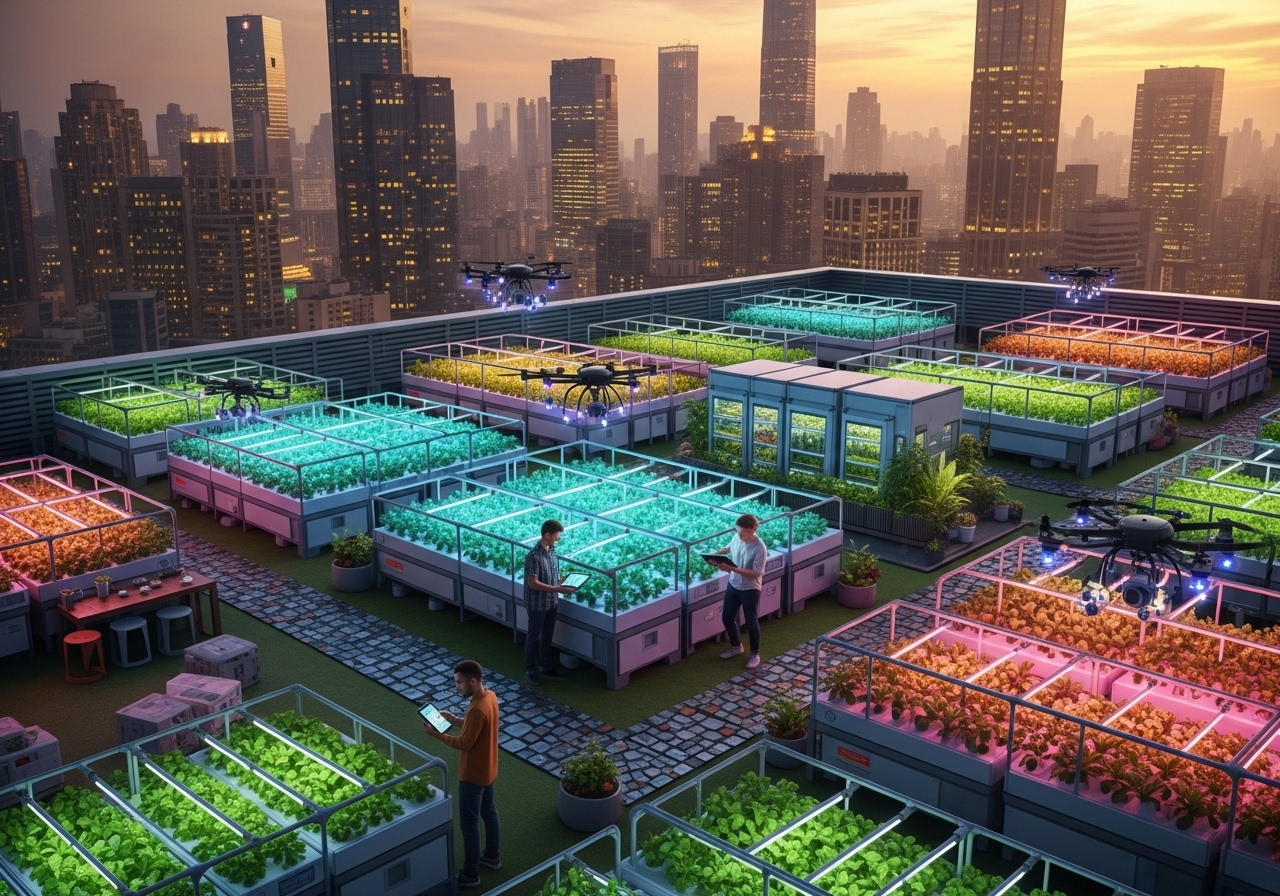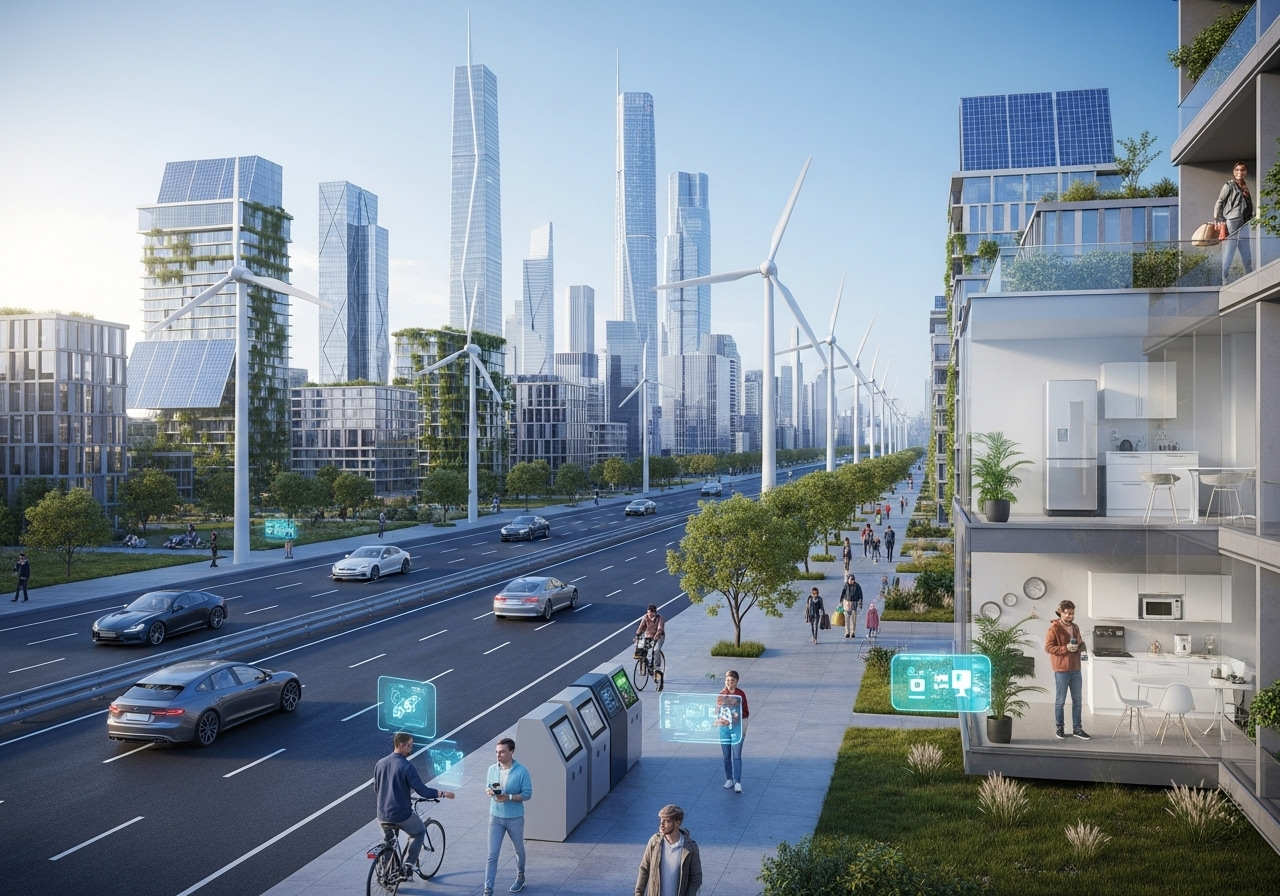How Technology Will Bring Us Closer to a Sustainable Future in 2026
Kailey Watts
2025-09-22
6 min read

As we stand at the threshold of 2026, the intersection of technological innovation and environmental sustainability has never been more promising. While climate challenges continue to demand urgent attention, emerging technologies are creating unprecedented opportunities to build a more sustainable world. From revolutionary advances in renewable energy to artificial intelligence systems that optimize resource consumption, technology is becoming our most powerful ally in the fight for environmental preservation.
Renewable Energy Revolution Reaches New Heights
The renewable energy sector has experienced remarkable growth, with solar and wind technologies becoming increasingly efficient and cost-effective. Advanced photovoltaic cells now achieve conversion rates that seemed impossible just a few years ago, while next-generation wind turbines generate power even in low-wind conditions. These improvements have made renewable energy the cheapest source of power in most regions globally. Energy storage technology has solved one of renewable energy's biggest challenges: intermittency. Modern battery systems can store excess energy generated during peak production times and release it when demand is high or natural conditions are unfavorable. Grid-scale storage solutions are becoming commonplace, allowing entire communities to rely on clean energy around the clock. Smart grid technology is transforming how we distribute and consume electricity. These intelligent networks automatically balance supply and demand, redirect power from surplus areas to those in need, and integrate various renewable sources seamlessly. Home energy management systems now allow individuals to generate, store, and even sell excess energy back to the grid, creating a more democratized and efficient energy ecosystem.
Artificial Intelligence Optimizes Resource Management
Artificial intelligence has emerged as a game-changing tool for sustainability across numerous sectors. AI-powered systems can analyze vast amounts of data to identify patterns and inefficiencies that human operators might miss. In agriculture, precision farming techniques use machine learning algorithms to optimize water usage, reduce pesticide application, and maximize crop yields while minimizing environmental impact. Smart city initiatives leverage AI to reduce urban carbon footprints significantly. Traffic management systems use real-time data to optimize traffic flow, reducing fuel consumption and emissions. Intelligent building management systems automatically adjust heating, cooling, and lighting based on occupancy and weather conditions, cutting energy waste by substantial margins. Supply chain optimization through AI has revolutionized how goods move around the world. Advanced algorithms can identify the most efficient transportation routes, reduce packaging waste, and minimize the carbon footprint of global commerce. Companies are using these insights to make their operations more sustainable while often reducing costs simultaneously.

Circular Economy Technologies Transform Waste Management
The concept of a circular economy, where waste becomes input for new production cycles, is being realized through innovative technologies. Advanced recycling processes can now break down complex materials that were previously destined for landfills. Chemical recycling techniques can convert plastic waste back into raw materials, creating a closed-loop system that dramatically reduces the need for virgin plastic production. Digital platforms are facilitating the sharing economy, allowing people to maximize the utility of existing resources rather than constantly producing new ones. Car-sharing services, tool libraries, and collaborative consumption platforms reduce the total number of products needed while maintaining access to necessary goods and services. Biotechnology is creating entirely new approaches to manufacturing. Bio-based materials can replace petroleum-derived products in everything from packaging to construction materials. Companies are developing synthetic biology techniques to produce everything from sustainable fuels to biodegradable plastics using microorganisms instead of traditional industrial processes.
Transportation Sector Embraces Sustainable Innovation
Electric vehicle adoption has accelerated rapidly, supported by expanding charging infrastructure and improving battery technology. Modern electric vehicles offer ranges that rival traditional gasoline cars while providing superior performance and lower operating costs. The transportation sector's electrification extends beyond personal vehicles to include buses, delivery trucks, and even large freight vehicles. Alternative fuel technologies are gaining traction in sectors where electrification faces challenges. Hydrogen fuel cells are powering heavy-duty vehicles and industrial applications, while sustainable aviation fuels are being developed to reduce the carbon footprint of air travel. These technologies provide pathways to sustainability for transportation modes that are difficult to electrify directly. Autonomous vehicle technology promises to further improve transportation efficiency. Self-driving cars can optimize routes in real-time, reduce traffic congestion, and enable more efficient ride-sharing systems. When combined with electrification, autonomous vehicles could dramatically reduce both emissions and the total number of vehicles needed.
Carbon Capture and Climate Technologies
Direct air capture technology has progressed from experimental concepts to commercially viable solutions. These systems can remove carbon dioxide directly from the atmosphere and either store it permanently or convert it into useful products. While still scaling up, these technologies offer the potential to actively reverse some of the damage already done to our climate. Climate monitoring and prediction technologies provide better data for environmental decision-making. Satellite systems can track deforestation in real-time, while ocean sensors monitor acidification and temperature changes. This enhanced monitoring capability enables more targeted and effective environmental protection efforts. Geoengineering research is exploring larger-scale interventions to address climate change, though these approaches remain controversial and require careful consideration of potential consequences. Solar radiation management and marine cloud brightening are among the techniques being studied as potential tools for climate intervention.
The Path Forward
Technology alone cannot solve all environmental challenges, but it provides essential tools for creating a more sustainable future. The key lies in thoughtful implementation that considers both environmental benefits and potential unintended consequences. As we move through 2026 and beyond, the integration of these technologies with policy changes and individual behavior shifts will determine how quickly we can transition to a truly sustainable society. The convergence of renewable energy, artificial intelligence, circular economy principles, and innovative transportation solutions creates a powerful foundation for sustainability. While challenges remain, the technological tools needed for a sustainable future are increasingly within our grasp, offering hope that we can address environmental challenges while maintaining prosperity and quality of life.



